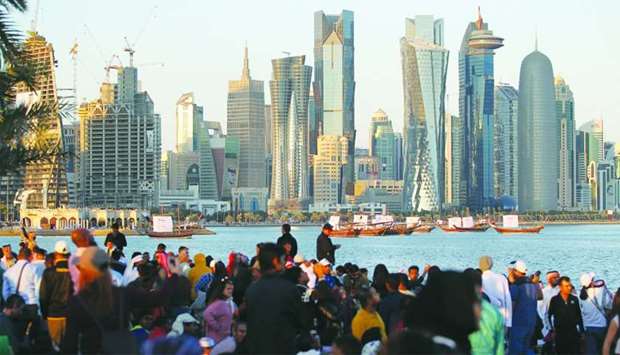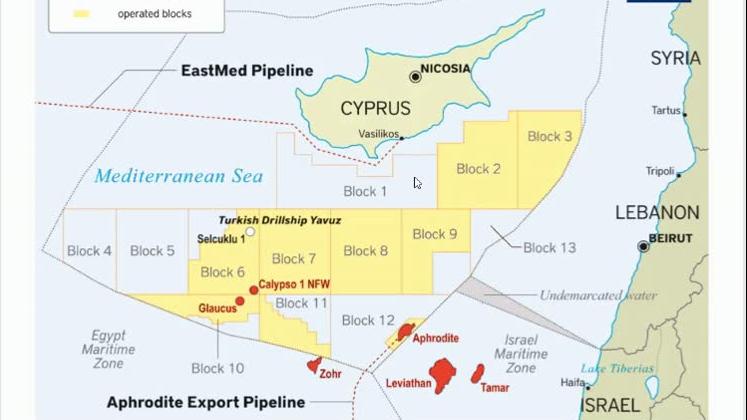Conflit maritime gréco-turc: «les tensions pourraient conduire à un réel conflit armé»

La tension est à son comble entre la Grèce et la Turquie depuis l’envoi par Ankara d’un navire de recherche près d’une zone revendiquée par Athènes. Selon Roudi Baroudi, expert en énergie et des conflits en Méditerranée, si les parties ne trouvent pas rapidement un terrain d’entente, les risques d’un conflit armé sont réels. Entretien.
Rien ne va plus entre Athènes et Ankara depuis qu’un navire turc consacré à la recherche sismique a été envoyé tout près de l’île grecque de Kastellorizo. Aussi connue sous le nom de Megísti, l’île est située à deux kilomètres des côtes turques et à environ 580 kilomètres d’Athènes. Après avoir brièvement suspendu ses recherches d’hydrocarbures, Ankara a annoncé que son opération allait reprendre. Pour soutenir la Grèce, la France a décidé de renforcer sa présence dans les eaux disputées.
Pour faire le point sur cette situation explosive, Sputnik s’est entretenu avec Roudi Baroudi, spécialiste de l’énergie internationalement reconnu. M.Baroudi a notamment travaillé en collaboration avec la Banque mondiale, le FMI, la Commission européenne, l’Agence des États-Unis pour le développement international et le Fonds arabe pour le développement économique et social. Il vient de publier le livre Maritime Disputes in the Eastern Mediterranean (Éd. Brookings), consacré aux conflits en Méditerranée.
Sputnik: Est-ce le début d’un conflit majeur?
Roudi Baroudi: «La première chose à considérer est que si les parties n’adhèrent pas aux mêmes principes découlant de la Convention des Nations unies sur le droit de la mer, le différend ne peut pas prendre fin. Si tel est le cas, les 20 prochaines années ne peuvent que ressembler aux 20 dernières années: les tensions vont persister ou, pire, conduire à un réel conflit armé.
La réalité est que ces derniers jours, le navire d’exploration turc a effectué des tirs sismiques dans une zone qui ferait presque certainement partie de la Zone économique exclusive reconnue de la Turquie si les parties appliquaient les principes de la Convention des Nations unies sur le droit de la mer et respectaient celui d’équidistance. C’est un constat auquel les parties pourraient en venir si elles voulaient en arriver à une solution équitable tenant compte de toutes les caractéristiques de la zone immédiate. Autrement dit, si les deux pays s’engageaient à négocier une solution équitable ‘‘à la lettre’’, en mettant en œuvre les règles établies dans le cadre de la Convention des Nations unies sur le droit de la mer.»
Sputnik: Selon l’expert Christian Fleury, interrogé récemment par Sputnik, la Méditerranée regorge de conflits potentiels de ce type. La Méditerranée peut-elle vraiment devenir une poudrière à cause de la recherche d’hydrocarbures?
Roudi Baroudi: «Eh bien, cela est vrai en Méditerranée orientale où le conflit israélo-arabe, par exemple, dure depuis plus de 75 ans et en raison d’autres facteurs. Néanmoins, si les dirigeants de la région devaient s’asseoir et s’engager véritablement à résoudre leurs différends pacifiquement –comme ils sont tenus de le faire en vertu de la charte des Nations unies et tenus d’utiliser les structures de partenariat de l’UE disponibles–, je ne doute pas qu’ils pourraient finir par conclure des accords qui isolent la recherche de profits liée aux hydrocarbures des effets de leurs désaccords politiques.
À certains égards, cela s’applique en particulier à la Grèce et à la Turquie. Ces deux pays sont actuellement dirigés par des individus dont les référents nationalistes les encourageraient sans doute à parvenir à un accord. Il est important de noter que si la Grèce et la Turquie ont déclaré unilatéralement leurs frontières maritimes hypothétiques, aucune de leurs revendications n’a été enregistrée, publiée ou même déposée auprès de la Division des affaires maritimes et du droit de la mer des Nations unies, ce qui signifie qu’elles ne sont pas reconnues internationalement.
Il existerait une solution équitable pour les deux parties, celle qui procède d’une ‘‘logique neutre’’ du droit de la mer et qui a été utilisée à plusieurs reprises dans d’autres parties du monde pour résoudre pacifiquement des conflits similaires. Cette solution tiendrait compte des petites îles grecques isolées tout en offrant le meilleur compromis aux deux États côtiers pour l’ensemble de la mer Méditerranée.»
Sputnik: Selon vous, la Turquie et la Grèce devraient donc faire appel aux tribunaux internationaux?
Roudi Baroudi: «C’est définitivement une option, tout comme l’arbitrage, si les parties ne parviennent pas à se mettre d’accord sur une forme de procédure diplomatique conventionnelle pour résoudre leurs revendications territoriales qui se chevauchent. Quelle que soit la manière de dialoguer, tant qu’ils acceptent de suivre les principes de la Convention des Nations unies sur le droit de la mer, les progrès récents de la technologie rendent le résultat des négociations beaucoup plus prévisible qu’il ne l’aurait été auparavant.
Des entreprises comme Fugro offrant des solutions de cartographie avancées et/ou utilisant une cartographie de haute précision du littoral peuvent fournir rapidement et précisément des ‘‘résultats reproductibles cohérents’’ pour chaque État (ou d’autres entités) comme jamais auparavant. Ces nouvelles technologies tournent la page de décennies de méfiance, laquelle a toujours représenté un grave problème quand il fallait définir des frontières maritimes offshore.
Ces nouvelles technologies permettent une cartographie précise des points de terminus terrestre (les régions frontalières de l’interface terre-mer), et en mer, des points de trijonction, c’est-à-dire là où, précisément, les Zones économiques exclusives de trois États côtiers se rencontrent pour former un point commun. Ces nouvelles technologies éliminent d’autres éléments sur lesquels il pourrait y avoir des différends et facilite l’interprétation de laConvention des Nations unies sur le droit de la mer afin que les deux parties obtiennent une ‘‘victoire’’ de manière équitable.
La Grèce et la Turquie ont la possibilité de suivre, entre autres, l’exemple des règlements des litiges ayant opposé le Bangladesh et le Myanmar, le Nicaragua et le Honduras, la Libye et la Tunisie, etc. C’est la voie à suivre: s’appuyer sur la loi, la science et les règles en vigueur et non sur les menaces et les canons.»
Sputnik: Afin de redéfinir leurs frontières maritimes, la Turquie a signé un accord avec la Libye en 2019 tandis que la Grèce en a signé un avec l’Égypte le 6 août dernier. Ces traités sont-ils reconnus par les États voisins et la communauté internationale?
Roudi Baroudi: «Dans la présente situation, ces deux paires d’États côtiers ont défini des frontières maritimes extracôtières qui semblent avoir des zones de revendication qui se chevauchent. Pour chaque paire d’États côtiers (la Turquie et la Libye ainsi que la Grèce et l’Égypte), ces accords peuvent être considérés comme des tentatives de définir de nouvelles frontières bilatéralement. Cependant, étant donné que les accords provisoires potentiels ne prenaient pas en considération les effets possibles sur les droits des États voisins, ils sont uniquement considérés comme des accords bilatéraux. Deux pays ont toujours le droit de tracer ce genre de frontières en vertu du droit international, mais ces traités n’engagent que les pays qui les ratifient et jamais les pays tiers.»








